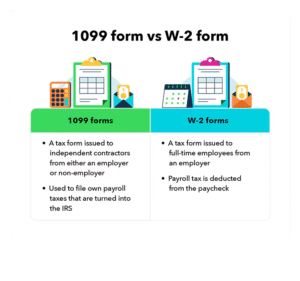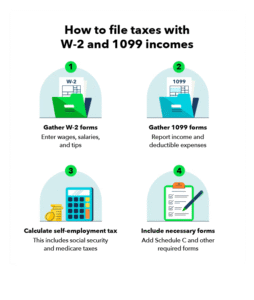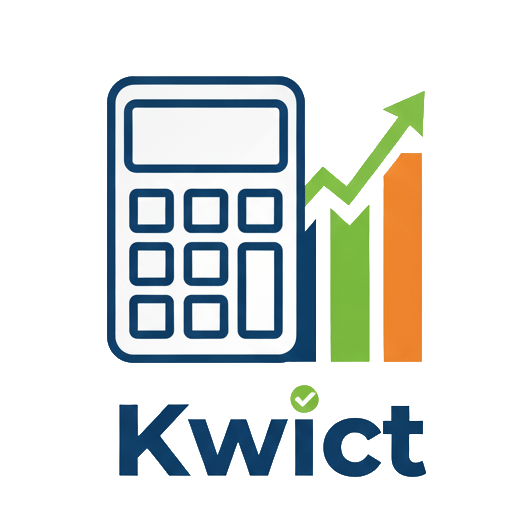Blogs
Simplify Tax Season: A Complete Guide to E-File 1099 & W2
Tax season can feel overwhelming for many small business owners, accountants, and freelancers. Managing payroll, organizing income records, and ensuring accurate filings often takes a significant amount of time and effort. However, with the help of digital solutions like E-File 1099 & W2, the process can become faster, easier, and more accurate than ever before. This guide will help you understand what E-File 1099 & W2 means, why it matters, and how to use it effectively to simplify your tax reporting.
1. What Is E-File 1099 & W2?
E-File 1099 & W2 refers to the process of electronically submitting your 1099 forms and W-2 forms to the IRS (Internal Revenue Service) and the SSA (Social Security Administration). Instead of mailing paper copies, electronic filing — often known as IRS e-file — allows employers and businesses to send their data directly through an approved tax filing software.
The 1099 form is typically used to report payments made to independent contractors or freelancers, while the W-2 form reports wages paid to employees and the taxes withheld from their paychecks. Both are essential documents in the U.S. tax system, and filing them correctly ensures compliance and prevents costly penalties.
2. Why You Should Switch to E-File 1099 & W2

Transitioning from manual tax filing to electronic filing offers multiple benefits. Not only does it save time, but it also helps businesses stay compliant with updated IRS regulations.
2.1. Speed and Convenience
The most obvious advantage of E-File 1099 & W2 is speed. Electronic submissions are processed much faster than paper forms. You can complete the entire process — from data entry to confirmation — within minutes using an authorized IRS e-file system.
2.2. Accuracy and Error Reduction
Paper filings are prone to human errors such as typos, misplaced numbers, or missing information. With E-File 1099 & W2, the system automatically validates your entries before submission, minimizing the risk of rejection or fines. Many tax filing software tools even integrate with your payroll management system to ensure data consistency.
2.3. Cost Savings
Printing, postage, and manual labor all cost money. Electronic filing eliminates those expenses, making it an affordable solution for both small businesses and large corporations.
2.4. Environmental Benefits
By reducing paper usage and physical mailing, E-File 1099 & W2 contributes to a more sustainable, eco-friendly tax process.
3. How E-File 1099 & W2 Works
The process is straightforward once you understand the steps involved.
3.1. Gather Required Information
Before starting, collect the necessary data from your employees and contractors. For W-2 forms, you’ll need employee names, Social Security numbers, and wage information. For 1099 forms, gather payment amounts, Taxpayer Identification Numbers (TINs), and business details.
3.2. Choose an Approved Tax Filing Software

Use a certified IRS e-file provider that supports both E-File 1099 & W2. Popular platforms include Tax1099, Track1099, and QuickBooks Payroll. These tools allow you to import your data, review for accuracy, and submit electronically.
3.3. Validate and Submit
The software automatically checks for formatting errors and missing fields. Once validated, it securely transmits your forms to the IRS or SSA. You’ll receive an electronic confirmation receipt once your submission is accepted.
3.4. Deliver Recipient Copies
Even though you’re filing electronically, employees and contractors must still receive their respective W-2 or 1099 copies. Most modern systems let you send them securely through email or employee portals.
4. Key Deadlines for E-File 1099 & W2
Meeting filing deadlines is crucial to avoid penalties.
-
W-2 forms: Must be submitted to the SSA by January 31 of each year.
-
1099 forms: If filing electronically, the due date is typically March 31.
Businesses that fail to meet these deadlines may face late filing fees ranging from $50 to $280 per form, depending on how long the delay lasts.
By using E-File 1099 & W2, reminders and automated scheduling features can help you stay on track and meet all tax deadlines effortlessly.
5. Common Mistakes to Avoid When Using E-File 1099 & W2
Even though electronic filing simplifies the process, certain mistakes can still occur.
5.1. Incorrect TIN or SSN
Always double-check Taxpayer Identification Numbers or Social Security Numbers. Incorrect numbers may lead to rejections by the IRS.
5.2. Mismatched Names and Numbers
Names that don’t match IRS records can trigger validation errors. Ensure all names match official identification documents.
5.3. Forgetting to Provide Recipient Copies
Submitting to the IRS isn’t enough — employees and contractors must receive their copies by the due date.
5.4. Not Using Authorized IRS E-File Providers
Only use certified tax filing software or services approved by the IRS. Unauthorized platforms may expose your data to security risks.
Conclusion: Simplify Your Tax Filing Today
Tax season doesn’t have to be stressful. With E-File 1099 & W2, you can reduce paperwork, minimize errors, and meet deadlines with confidence. Whether you’re a small business owner or a payroll administrator, switching to an electronic filing system ensures smoother, faster, and more accurate results.
By embracing digital transformation in tax management, you’re not just saving time — you’re future-proofing your business against compliance challenges. So this tax season, make the smart move: go paperless, go digital, and E-File 1099 & W2.


